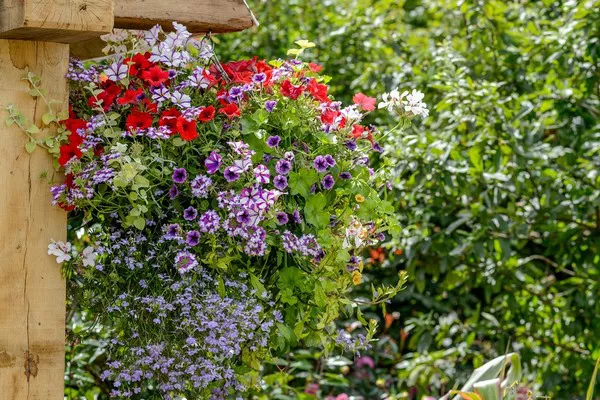Poppies are a beloved and enchanting addition to any garden. Their striking, often vibrantly colored blooms bring a touch of beauty and elegance to outdoor spaces. However, the blooming season for poppies is relatively short-lived, leaving many gardeners wondering what to do with their poppies after they have flowered.
Deadheading Poppies for Extended Blooms
One of the most effective methods for prolonging the blooming season of poppies is deadheading. Deadheading is the practice of removing spent or fading flowers from the plant. This not only keeps the garden looking fresh and tidy but also encourages the poppies to produce new buds, extending the overall blooming period.
To deadhead poppies:
Wait until the poppy flowers have started to wither and lose their vibrancy.
Using clean and sharp scissors or pruning shears, snip the faded flowers just below the flower head, where the stem connects.
It’s important to note that not all poppy varieties respond well to deadheading, and some may not produce a second flush of blooms.
However, for many types, deadheading can be a simple and effective way to enjoy poppies for a more extended period.
Collecting Poppy Seeds
One of the most distinctive features of poppies is their seed pods, often referred to as “heads” or “capsules.” Poppies produce these pods after flowering, which eventually dry and split open to release seeds. Collecting poppy seeds can be a rewarding endeavor, as it not only allows you to save seeds for future planting but also helps to control self-seeding in the garden.
To collect poppy seeds:
Wait for the poppy seed heads to turn brown and dry on the plant. This is a sign that they are ready for harvest.
Use clean, dry scissors to cut the seed heads from the plant.
Place the seed heads in a paper bag or container, allowing them to continue drying for a week or two. This helps the seeds separate from the pods.
The collected seeds can be stored in a cool, dry place for future planting, ensuring a continuous supply of these delightful blooms in your garden.
Self-Seeding Poppies
Poppies are known for their ability to self-seed, meaning they naturally drop their seeds in the garden, allowing new plants to grow without human intervention. While this can be a convenient way to ensure a consistent poppy presence in your garden, it’s important to manage self-seeding to prevent overcrowding and ensure a balanced garden ecosystem.
To manage self-seeding poppies:
Allow some poppy seed heads to remain on the plants after flowering. This will ensure a steady supply of new plants.
Periodically thin out poppy seedlings to maintain proper spacing between plants and prevent overcrowding.
Remember that self-seeding can result in poppies popping up in unexpected places, so careful monitoring and management are essential.
Cutting Back Foliage After Flowering
Once poppy flowers have finished blooming, the plant’s energy begins to shift from flower production to seed production. At this stage, you can consider cutting back the foliage to encourage the plant to conserve energy and focus on seed development. This practice is particularly helpful if you have limited garden space and wish to reduce the plant’s overall size.
To cut back poppy foliage:
Using clean pruning shears or scissors, trim the poppy stems down to a few inches above the ground. Be sure to leave some foliage to allow the plant to continue photosynthesizing and storing energy.
Cutting back poppies is a viable option, but it may result in fewer self-seeding opportunities, as the seed heads will be removed along with the foliage. Choose this method based on your specific garden needs and preferences.
Dividing Poppies for Maintenance
Over time, poppies can become overcrowded, leading to reduced flowering and overall health. Dividing poppies is an effective way to rejuvenate the plants, control their spread, and ensure their long-term vitality. This is typically done in late summer or early autumn, after the poppies have finished flowering for the season.
To divide poppies:
Carefully dig up the entire poppy clump, ensuring that you do not damage the roots or stems.
Use a clean, sharp knife or spade to divide the clump into smaller sections, making sure that each section has roots and shoots.
Replant the divided sections in a well-prepared garden bed or containers, ensuring proper spacing and soil quality.
Dividing poppies not only rejuvenates the plants but also provides you with the opportunity to expand or reorganize your garden.
Providing Post-Flowering Care
After the poppies have finished flowering, it’s essential to provide them with proper care to ensure their continued health and vigor. Here are some key steps for post-
flowering care:
Watering: Continue to water your poppies as needed, ensuring that the soil remains consistently moist but not waterlogged. Poppies typically require less water once they have finished flowering.
Fertilization: Apply a balanced, all-purpose fertilizer to support the growth of new foliage and the development of seed pods. Follow the manufacturer’s recommendations for application rates.
Mulching: Apply a layer of organic mulch around the base of your poppies to help retain moisture and suppress weeds.
Pest and Disease Control: Monitor your poppies for signs of pests or diseases, and take appropriate measures if necessary. Poppies are generally resistant to most common garden pests.
Conclusion
Poppies are a delightful addition to any garden, but they require thoughtful care and maintenance, especially after they have flowered. By implementing strategies like deadheading, collecting seeds, managing self-seeding, cutting back foliage, dividing the plants, and providing post-flowering care, you can ensure the long-term health and beauty of your poppy garden. With proper care and attention, you can enjoy the captivating charm of poppies season after season, enhancing the aesthetics and vitality of your outdoor space.


